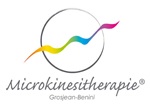 Microkinesitherapy – the method
Microkinesitherapy – the method
Microkinesitherapy is a method of rehabilitation that is derived from embryology, osteopathy, neurobiology, phylogenesis, organogenesis, neurobiology and kinesitherapy.
The name „microkinesitherapy“ comes from the combination of the meanings of the words „micro“ (small), „kinesi“ ( movement) and „therapy“ (treatment) and means „treatment with small movements“.
The history of microkinesitherapy began in 1980, when two French physiotherapists, Daniel Grosjean and Patrice Benini first began working on this original therapeutic method.
At a cellular level, the human body has the remarkable ability to record all physical injuries (e.g. fractures or joint sprains), emotional experiences (traumas of various causes) environmental effects (high and low temperature, sound intensity, humidity) as well as infectious diseases (caused by bacteria and viruses). Their destructive impact interrupts the body’s workings and weakens it.
The basic role of microkinesitherapy is the activation of mechanisms that trigger the repair systems in the human body. The method is used by both physicians and physiotherapists.
What is the treatment like? / Specifics of the procedure
A delicate palpation examination, i.e. for micro palpations, permits the therapist to find pathogenic scars. Such scars are the result of injuries that disrupted the life rhythm of the tissues.
By using precisely made maps of the body, the therapist by applying microkinesitherapy locates the strongest blockages and then gently presses them. The touch causes a stimulus to be sent through the nervous system to the cerebral cortex. In response, an impulse arises that removes tension from the body which causes cramps and pain.
An extremely interesting point in microkinesitherapy is that together, the muscles form so-called muscle chains. In the case of an injury, blockage of one of the muscles in a given chain will affect the others, thereby weakening them. The muscle chains are also connected to selected internal organs. Abnormal operation of one of the internal organs will have a negative effect on all muscles in a given chain and vice versa.
The course of the procedure
Before the procedure the patient briefly informs the therapist about his/her ailments.
During the course of the microkinesitherapy session the patient remains dressed and lies on a massage table. Delicate stroking by the therapist is enough to find the blockages accumulated in the body.
The treatment is painless, lasting from about 20 to 50 minutes, after that the next therapy is usually proposed after about two weeks.
Two or three meetings are usually required.
In the case of chronic diseases, the number of treatments required is determined individually.
The effects of the treatment
The gentle stretching of the affected muscle loosens it and makes it possible to restore its natural ability to work properly. It is crucial to first find the blockage and then carry out the stimulation. As a result, the body will be stimulated to regenerate any blocked areas.
The aim of the treatment is to provide the patient with release from physical and mental strains and pain. Also, the skin’s connection with a given muscle, vertebra, mucous membrane or nerve is used during the therapy. Microkinesitherapy allows you to effectively be freed from injuries which have been acquired throughout your lifetime, including those that took place during the fetal period. After the procedure, the patient will feel relaxed and their body becomes balanced within 2-5 days.
Microkinesitherapy and the nervous system
During the therapy, attention is also paid to injuries that come from the patient’s psyche. This is very important because often the body’s ailments are caused by traumatic experiences from the past (e.g. loss of a loved one, a car accident, dismissal from work). Such injuries can disturb the functioning of cells or tissues and negatively affect the process of their regeneration,
Microkinesitherapy is a neurophysiological method, so it regenerates the human body through the nervous system. It relaxes and releases the tension for which the patient came to the therapist.
The most important indications for the procedure
Microkinesitherapy helps in cases of:
- headaches (including migraines);
- back and joint pain;
- degenerative and post-traumatic conditions;
- sight, hearing and balance disorders;
- dislocations and sprains;
- diseases of the middle ear and paranasal sinuses;
- sleep problems;
- tinnitus;
- tense muscles;
- scoliosis or asymmetry;
- women’s ailments, problems with fertility;
- dysfunctions of motor organs and internal organs;
- emotional, mental and developmental disorders;
- disorders in the functioning of the digestive system;
- convalescence after surgery;
- trouble with memory;
- allergies;
- postpartum shock;
- pain symptoms with undetermined causes (not reflected in medical examinations).
Microkinesitherapy can be used regardless of the patient’s age, as well as for pregnant women, infants and persons with slight mental retardation. The treatment works well as a form of prevention and has no side effects. The only contraindication to the use of microkinesitherapy are acute mental disorders.

